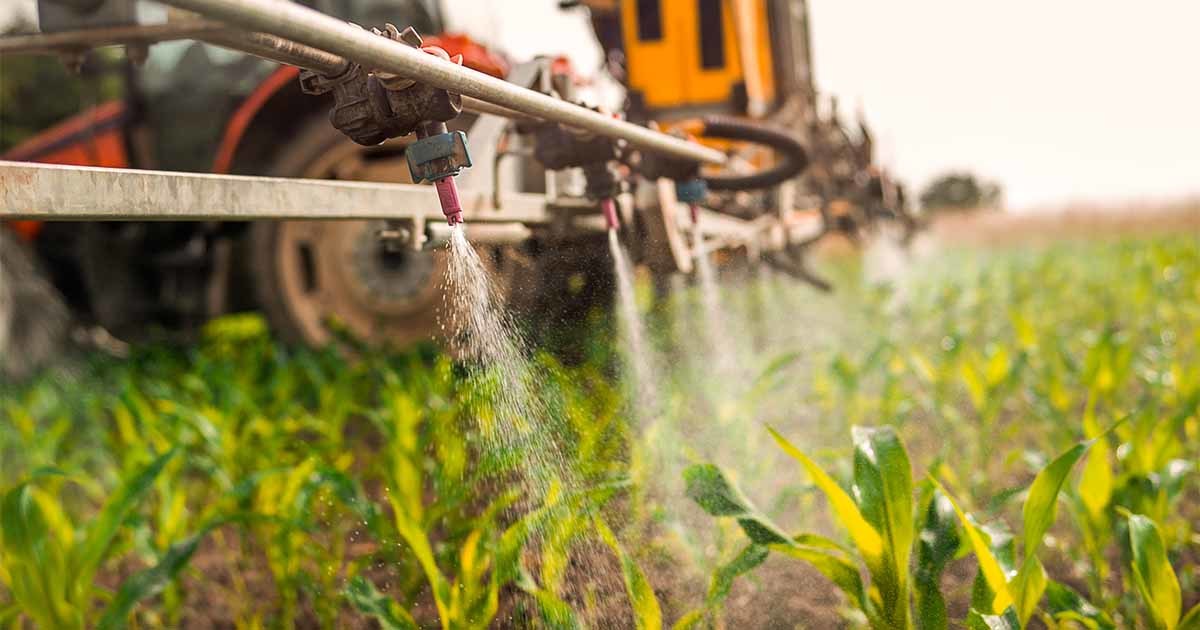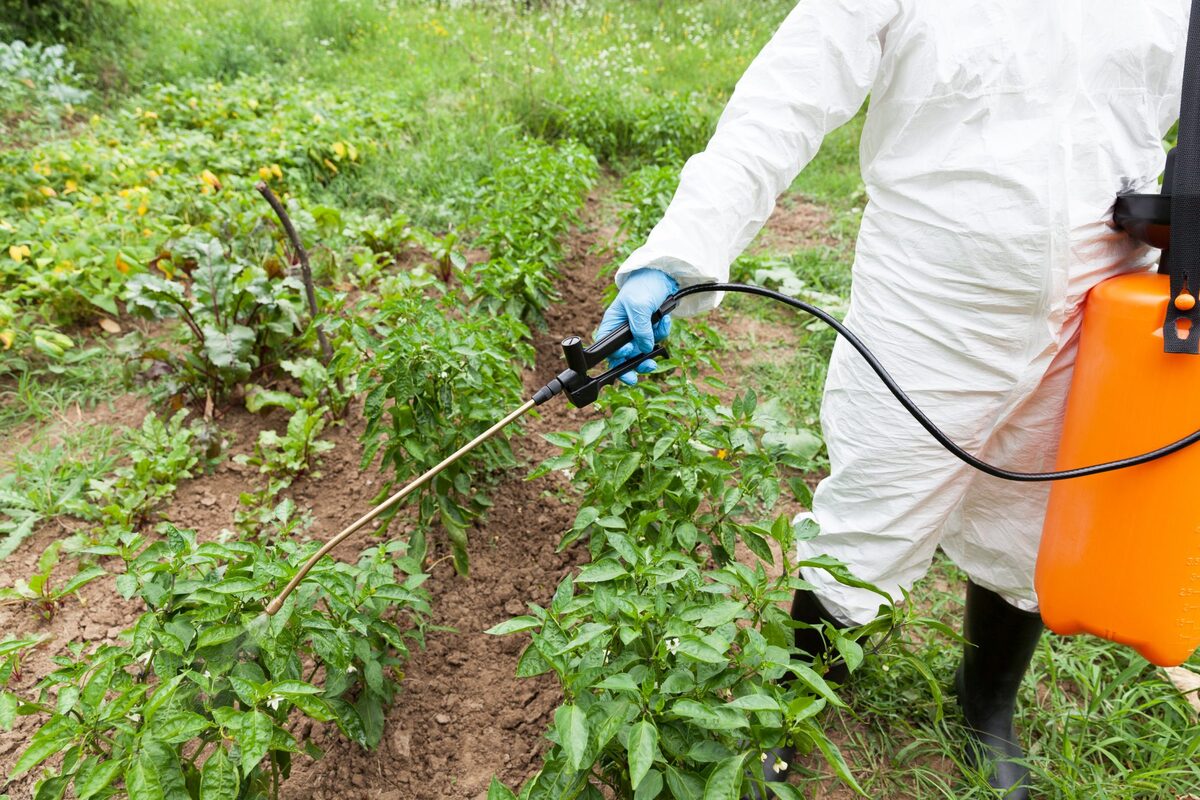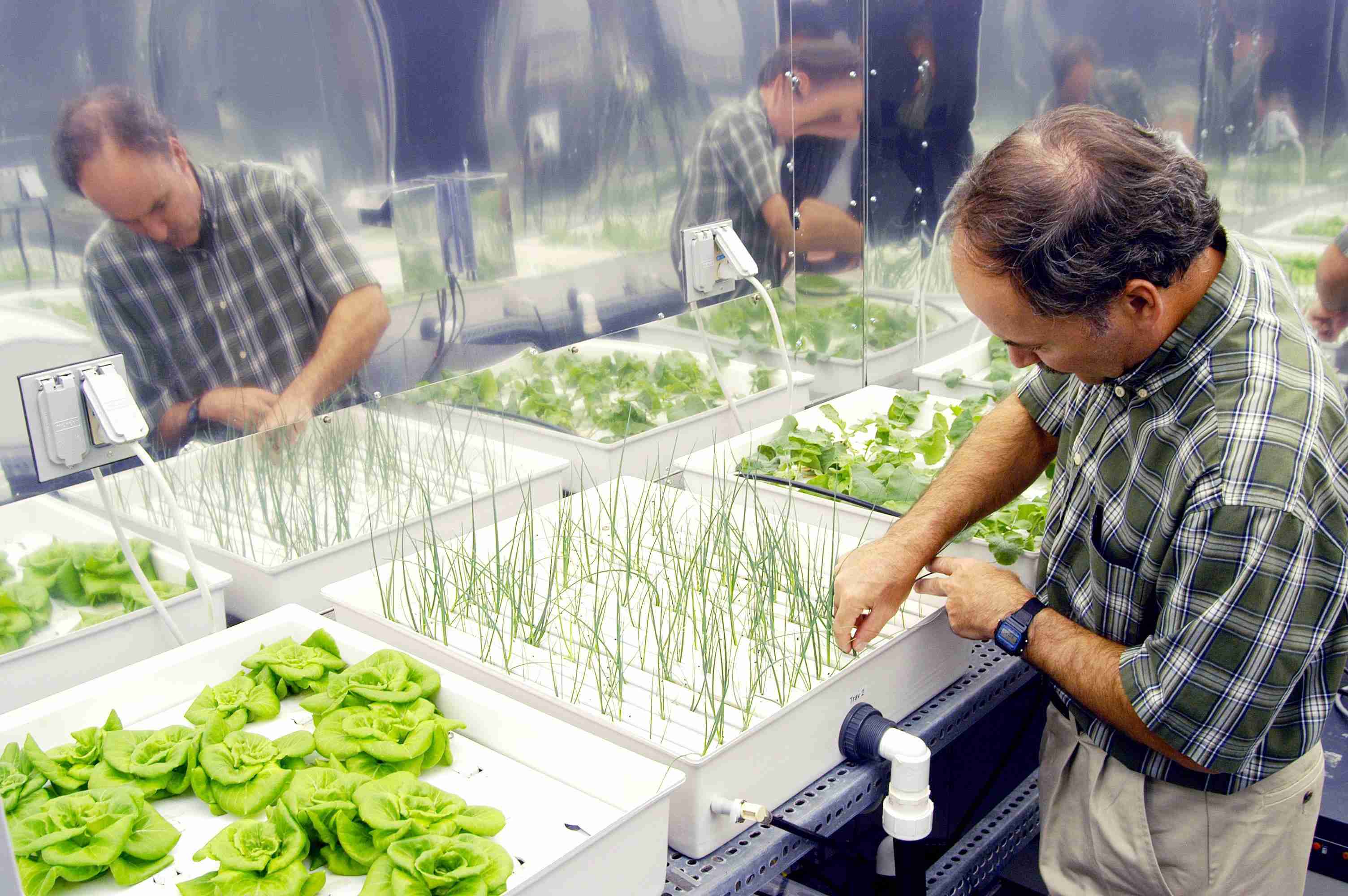Home>Gardening News and Trends>Latest News>What Is The Type Of Contamination If Traces Of Pesticides Are Found On Raw Poultry Breast?


Latest News
What Is The Type Of Contamination If Traces Of Pesticides Are Found On Raw Poultry Breast?
Modified: January 22, 2024
Latest News: The type of contamination found on raw poultry breast when traces of pesticides are detected.
(Many of the links in this article redirect to a specific reviewed product. Your purchase of these products through affiliate links helps to generate commission for Chicagolandgardening.com, at no extra cost. Learn more)
Table of Contents
Introduction
Welcome to our article on the types of contamination that can occur when traces of pesticides are found on raw poultry breast. Pesticides, although widely used in agriculture to protect crops from pests and diseases, can pose potential risks to human health when consumed in excessive amounts or in inappropriate ways.
As consumers, it is important to understand the potential dangers associated with pesticide contamination and the steps that can be taken to minimize exposure. By being informed about the different types of pesticides commonly used, the health risks they pose, and the regulatory guidelines in place, we can make more educated choices when purchasing and preparing poultry.
Throughout this article, we will delve into the world of pesticides, explore the types of contamination that can occur on raw poultry breast, discuss the potential health risks associated with pesticide consumption, and provide guidelines and best practices to minimize contamination. By the end, you should feel empowered to make informed decisions about the poultry you consume and take necessary precautions to protect your health and well-being.
Understanding Pesticides
Pesticides are chemical substances that are used to control or eliminate pests, such as insects, weeds, and fungi, that can harm crops and reduce agricultural yields. They are widely used in agriculture to protect crops and ensure food security. However, it is important to understand the potential risks associated with the use of pesticides and their impact on human health.
There are different types of pesticides, each with its own characteristics and target pests. Insecticides, for example, are designed to kill or repel insects, while herbicides are used to control or eliminate unwanted plants. Fungicides, on the other hand, are used to prevent or treat fungal infections in crops.
Pesticides can be classified into two main categories: synthetic pesticides and natural pesticides. Synthetic pesticides are chemically synthesized compounds that are specifically designed to control pests. They are usually more potent and longer-lasting compared to natural pesticides. Natural pesticides, on the other hand, are derived from natural sources, such as plants, animals, or minerals. They are often considered to be less harmful to humans and the environment.
Pesticides can be applied to crops in various ways, including spraying, dusting, and soil treatment. To ensure effective pest control, farmers often use a combination of different pesticides and application methods. However, improper use or overuse of pesticides can result in residues on crops, including raw poultry breast, which can pose potential health risks to consumers.
It’s important to note that pesticide residues can persist on crops even after they have been harvested and processed. This means that even if you cook or wash raw poultry breast, traces of pesticides may still be present. Therefore, understanding the types of pesticides used, their potential health risks, and the regulatory guidelines in place is crucial to making informed decisions about the poultry you consume.
Contamination of Poultry Breast
Contamination of poultry breast with pesticides can occur through various pathways, including during the rearing process, through feed contamination, or through environmental factors. Pesticide residues can be present on the skin, fat, and muscle tissue of poultry, including the breast.
One of the primary ways that pesticides can contaminate poultry is through their use in the rearing process. Pesticides may be used directly on poultry to control external parasites or applied to their living environment to prevent infestations. This direct exposure to pesticides can result in residues accumulating in the tissues of the birds, including the breast.
In addition to direct exposure, pesticide contamination can also occur through feed. Poultry feed may contain traces of pesticides if the ingredients used in their production were grown using pesticides or if they were contaminated during storage or transportation. When poultry consume this contaminated feed, the pesticides can accumulate in their tissues, including the breast.
Furthermore, environmental factors can also contribute to pesticide contamination of poultry breast. For example, if poultry are housed near agricultural fields where pesticides are sprayed, there is a risk of pesticide drift. This means that pesticide particles can be carried by wind or water currents and settle on the poultry’s feathers or skin, ultimately making their way into the breast tissue.
It’s important to note that the level of pesticide contamination in poultry breast can vary depending on various factors, including the type of pesticide used, the dosage, the frequency of application, and the time between pesticide application and poultry processing. However, even small traces of pesticides can pose potential health risks, making it crucial to understand the types of pesticides commonly found on poultry breast and their associated health concerns.
Common Types of Pesticides Found
There are several common types of pesticides that can be found as residues on raw poultry breast. These pesticides are frequently used in agriculture to protect crops from pests and diseases. It is important to understand these different types of pesticides to be aware of their potential health risks and the precautions that need to be taken when consuming poultry.
1. Organophosphates: Organophosphates are a class of pesticides that are widely used in agriculture. They work by inhibiting the activity of an enzyme in the nervous system of pests, ultimately leading to their death. However, organophosphates can also be harmful to humans, affecting the nervous system and potentially causing symptoms such as nausea, dizziness, and even more severe effects with prolonged exposure or high doses.
2. Organochlorines: Organochlorines were once commonly used in agriculture, but many of them have been banned or phased out due to their persistence in the environment and potential harm to human health. However, traces of organochlorines can still be found as residues on poultry breast. These pesticides have been linked to various health issues, including reproductive disorders, immune system dysfunction, and certain types of cancer.
3. Pyrethroids: Pyrethroids are synthetic pesticides that are often used in household insecticides as well as in agricultural settings. They are designed to control a wide range of insects and pests. While pyrethroids are generally considered to be less toxic to humans than other types of pesticides, long-term exposure or ingestion of large amounts can still have health effects such as skin irritation and respiratory problems.
4. Carbamates: Carbamate pesticides are another common type of pesticide found on poultry breast. These pesticides work by inhibiting enzymes in insects, causing paralysis and eventual death. Like organophosphates, carbamates can also affect the nervous system in humans, leading to symptoms such as nausea, vomiting, and blurred vision.
5. Herbicides: Although primarily used to control weeds, herbicides can also be present as residues on poultry breast. Glyphosate, for example, is a widely used herbicide that has been the subject of debate due to potential health concerns. While regulatory bodies consider glyphosate to be safe within certain limits, research on the long-term effects of exposure is ongoing.
It’s important to note that these are just a few examples of the common types of pesticides found on poultry breast. The use of pesticides can vary depending on the region, farming practices, and specific pest control needs. Being aware of the types of pesticides used and their potential health risks can help consumers make informed choices when purchasing and preparing poultry.
Potential Health Risks
Consuming poultry breast contaminated with traces of pesticides can present potential health risks. While the levels of pesticide residues found on poultry are generally within regulatory limits, it is important to understand the potential effects of long-term exposure and ingestion of these residues.
One of the primary concerns is the potential for pesticide residues to accumulate in the body over time. Even small amounts of pesticide residues can add up with frequent consumption, leading to a cumulative effect. This can be particularly concerning for vulnerable populations, such as children, pregnant women, and individuals with compromised immune systems.
Pesticides, such as organophosphates and carbamates, have been linked to various health issues. Long-term exposure to these pesticides can affect the nervous system and potentially lead to neurodevelopmental disorders in children. They have also been associated with respiratory problems, reproductive disorders, and certain types of cancer.
Organochlorine pesticides, although being phased out, can still persist in the environment and accumulate in the fatty tissues of animals, including poultry. Long-term exposure to these pesticides has been linked to endocrine disruption, immune system dysfunction, and adverse reproductive health effects.
Furthermore, there is concern about the potential health risks of pesticide mixtures and the synergistic effects they may have. Often, poultry may be exposed to multiple pesticides throughout their lifecycle, and the interaction between different pesticides can have unpredictable effects on human health.
It’s important to note that the risks associated with pesticide residues on poultry breast are generally considered to be low when consumed within the recommended limits. Regulatory bodies, such as the U.S. Environmental Protection Agency (EPA) and the European Food Safety Authority (EFSA), establish maximum residue limits (MRLs) to ensure the safety of the food supply. Compliance with these guidelines helps minimize potential health risks and ensures that the levels of pesticide residues in poultry breast are within acceptable limits.
However, it is still advisable to take precautions and reduce exposure to pesticide residues as much as possible. Washing poultry thoroughly, using organic or pesticide-free options, and cooking poultry at appropriate temperatures can help reduce the residue levels and minimize potential health risks.
By being aware of the potential health risks associated with pesticide residues on poultry breast, consumers can make informed decisions about their food choices and take necessary precautions to protect their health and well-being.
Regulations and Guidelines
To ensure the safety of consumers, regulatory bodies around the world have established regulations and guidelines regarding pesticide residues on food, including poultry breast. These regulations aim to ensure that the levels of pesticide residues remain within acceptable limits and do not pose significant health risks.
In the United States, the U.S. Environmental Protection Agency (EPA) is responsible for setting tolerances for pesticide residues in food. Tolerances are the maximum allowable levels of pesticide residues that are legally permitted in or on raw agricultural commodities. The EPA determines these tolerances based on extensive scientific research and risk assessment, taking into consideration human health factors.
The European Union (EU) follows a similar approach with the European Food Safety Authority (EFSA) being responsible for risk assessment and the European Commission establishing maximum residue levels (MRLs) for pesticides. These MRLs are legally binding and set the maximum allowable levels of pesticide residues in or on food products being sold in the European market.
Other countries also have their own regulatory bodies and guidelines in place to regulate pesticide residues on food. These regulations are continuously reviewed and updated based on new scientific findings and safety assessments.
In addition to the regulatory bodies, various organizations provide guidelines on the safe use of pesticides and the prevention of contamination. These guidelines often address good agricultural practices (GAPs) and include recommendations on pesticide handling, application, and storage to minimize the likelihood of residue contamination on crops and poultry.
Consumers can also refer to labels on food packaging for information about pesticide use. In many countries, food products are required to have labels indicating the presence of pesticide residues or indicating that they are grown using organic or pesticide-free practices. These labels allow consumers to make informed choices about the products they purchase.
It is important for consumers to be aware of the regulations and guidelines in their respective regions to have a better understanding of the safety measures in place. By following these regulations and guidelines, individuals can have confidence in the safety of the poultry breast they consume and make informed decisions about their food choices.
Best Practices for Reducing Contamination
While regulatory measures and guidelines are in place to ensure the safety of poultry breast, there are several best practices consumers can follow to further minimize the risk of pesticide contamination.
1. Choose organic or pesticide-free options: Opt for organic poultry products that are produced without the use of synthetic pesticides. Look for labels or certifications that indicate the product is organic or pesticide-free.
2. Wash poultry thoroughly: Before cooking, ensure that you wash poultry breast thoroughly under running water. This can help remove any surface residues that may be present.
3. Practice safe food handling: Properly handle and store poultry to prevent cross-contamination. Keep poultry separate from other foods, and use separate cutting boards and utensils when preparing and cooking poultry.
4. Cook poultry at appropriate temperatures: Cooking poultry to the proper internal temperature is crucial for food safety. Use a food thermometer to ensure that poultry is cooked to a minimum internal temperature of 165°F (74°C) to kill any potential bacteria or contaminants.
5. Practice integrated pest management (IPM): Integrated pest management is an approach that focuses on the prevention and control of pests through a combination of strategies, including biological control, cultural practices, and targeted pesticide use. Supporting farmers and agricultural practices that employ IPM can help reduce overall pesticide use.
6. Support local and sustainable farming practices: By supporting local and sustainable farming practices, you can contribute to a more environmentally friendly and responsible food system. Local and sustainable farmers often prioritize crop rotation, natural pest control methods, and reduced pesticide use, resulting in lower pesticide residues on crops and poultry.
7. Stay informed: Stay updated on the latest information and research regarding pesticide use and safety. This can help you make informed decisions about the poultry products you purchase and the precautions you take when preparing them.
Remember, while these best practices can help reduce the risk of pesticide contamination, it’s important to recognize that complete elimination of pesticide residues may not be possible. However, by taking these precautions, you can minimize exposure and make healthier choices when it comes to consuming poultry breast.
Conclusion
When traces of pesticides are found on raw poultry breast, it is essential to understand the types of contamination that can occur and the potential health risks associated with pesticide residues. Pesticides are used in agriculture to protect crops, but improper use or overuse can result in residues on poultry, posing potential health risks to consumers.
Throughout this article, we have explored the different types of pesticides commonly found on poultry breast, including organophosphates, organochlorines, pyrethroids, carbamates, and herbicides. While regulatory bodies such as the EPA and EFSA establish tolerances and maximum residue levels, it is important for consumers to be aware of these risks and take necessary precautions.
Potential health risks associated with consuming poultry breast that is contaminated with pesticides include neurodevelopmental disorders, respiratory problems, reproductive disorders, and certain types of cancer. While the levels of pesticide residues on poultry breast are generally within acceptable limits, it is still advisable to minimize exposure, especially for vulnerable populations.
Regulations and guidelines set by regulatory bodies and organizations provide a framework for monitoring and controlling pesticide residues. By following these guidelines, consumers can make informed choices about the poultry they consume and have confidence in the safety measures in place.
Consumers can further reduce contamination by choosing organic or pesticide-free poultry products, washing poultry thoroughly, practicing safe food handling, cooking poultry at appropriate temperatures, supporting integrated pest management practices, and staying informed about pesticide use and safety.
Ultimately, by being informed about the potential risks and taking necessary precautions, consumers can minimize their exposure to pesticide residues on raw poultry breast and make healthier choices for themselves and their families. Awareness, education, and responsible farming practices play important roles in ensuring the safety and well-being of all consumers.





